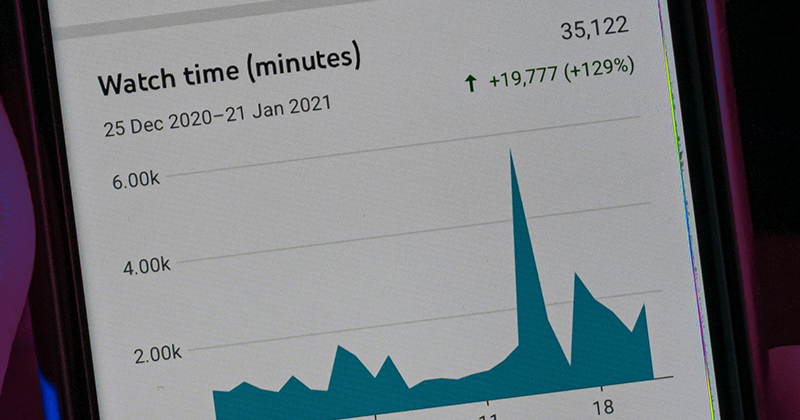Search engine ranking factors

What is ranking
Site ranking is the process of sorting the results in search engine results according to the query entered. In particular, sites with more useful and relevant information for users are ranked high. At the same time, search engine algorithms downgrade pages with a low usefulness factor.
To successfully promote your site in the top 10 search results, foremost make it user-friendly, understandable and useful for people. And search engines will evaluate its quality and authority by many ranking factors. That is, eventually, a resource that is useful to readers is sure to reach the top.
Search engine ranking factors
Search engines do not reveal their algorithms in detail, but most of their logic is known to SEO optimizers. All ranking factors are divided into the following categories:
- Domain.
- Linking.
- Technical.
- Behavioral.
- Commercial.
- Social.
- Textual.
Domain factors

The domain determines the age of the resource, its history and the relevance of the subject to the search query. That is, a site without a specific focus, where content is written "about everything" is unlikely to get on the first pages of results. Domain ranking factors include:
- Age of the domain. The longer a site has been online, the higher its authority and chances of ranking higher.
- Domain history. If the site has been previously sanctioned, it can greatly slow down SEO promotion. Even if the resource has long been out of the filters.
- Human name. If the domain contains words related to the brand or theme of the site, it raises its ranking in the search engine to some extent.
- Domain zone. If the domain is national, it has a positive effect on the ranking of the site in the country.
- Number of pages in the index. The more pages on the site with information relevant to search queries, the higher its ranking and authority.
When creating a website, it is important to choose a memorable domain corresponding to the subject of the resource or the name of the company. Also consider territorial affiliation because with a regional domain, it is easier to get a good position in the areas of business activity.
Link ranking factors

In 2022, links have less and less influence on ranking, but are still considered by search engines. Link factors include the following:
- External anchors. These are the text of links leading to your site from other people's resources. Build links with natural anchors consisting of the name of the brand or site address, not keywords. Otherwise, it is effortless to get hit by filters and forget about SEO promotion.
- The rate of growth link profile. A sudden increase in link mass for a young site is very likely to result in search engine sanctions. Increasing the number of links should be gradual and constant (month after month).
- Topics of donor sites. Search engines always check how closely the referring site is thematically similar to yours.
- Authority referring domains. It is important that resources that refer to your site have a sufficient level of credibility and age, low spam rate. They are also not under any kind of sanctions.
- Internal site linking. The architecture of the resource, its value and the importance of the information on each page is considered.
- Donor age, regionality. Links from domains of great age will help to move faster in the rankings. Links from regional donors to a greater extent will increase the ranking at the territorial level.
Link profile is an important criterion when optimizing sites for search engines. When dealing with external and internal links, pay attention to their quality and relevance, as well as equal accumulation.
Technical ranking factors

Technical factors, in particular, affect the quality of the site and the bounce rate of users. That is, if the resource will be slow to load and generally perform poorly, Google algorithms will lower its ranking in search results. Such factors include:
- Page load speed. Any page must open quickly from any device, otherwise simply unacceptable. If the load is slow, the user will go to a competitor without waiting for the content to appear. For example, the main page should load not longer than 1–2 seconds at normal Internet speed.
This is influenced by the quality of your hosting servers, their location in your region, competent optimization of the interactive content and the proper configuration of the CMS. In fact, any installed WordPress plugin increases loading time of each page by 0.1-0.5 seconds. So, the fewer plugins installed — the faster the site runs. - Internal linking. Related by topic pages should be united by contextual links. It is also important that the resource has as few redirects or links leading to non-existent pages as possible.
- Optimize media. All images should be connected with "lazy loading" — attribute loading="lazy". Also, use a modern .webp format if possible, or at the very least.jpg with a high compression ratio of 7–10 points.
- Adaptability. The site should look equally good on desktops as well as phones and tablets of any screen size.
- Map for robots. Don't forget to set up your sitemap.xml and robots.txt.
- Secure HTTPS connection with SSL certificate installed. This protocol provides two-way encryption between the client and the server, which means traffic from your site will become impossible to intercept. Or rather, you can intercept it, but you won't be able to decrypt it.
- HTML validity. Superfluous styles, embedded in the HTML code of each page, greatly slow down the loading. And tags mistakenly generated by your CMS can easily break some of the content.
- Server response time. The further away the server is from the target audience, the longer you have to wait for pages to load. The normal value of the delay is no more than 200 ms. Choose more expensive (but also more reliable) web hosting sites for this purpose.
- No duplicate pages and no redirect chains within the site.
- Microdata throughout the site, and especially on sales pages.
Starting to promote the site from scratch, it is important to pay attention to the technical factors without working out which the resource will be very difficult to pull in the top.
Behavioral factors

Behavioral factors allow search engines to assess the impact of site content on user behavior. These include:
- Browsing time. In fact, the time people spend on a resource and the depth of content browsing (the number of pages visited) tells you how useful it is.
- Bounce rate. Analyze sales pages that readers like the least and refine them. Your resource will rise in the rankings if users coming from search find answers and don't return to your competitor's sites.
- Number of returns to search. The more often people don't solve their problem on the pages of your site — the less useful it is to the audience. And the lower its position will be.
- Direct visits to the site. Search engines rank highly for branded site traffic and direct visits from bookmarks, history, or by typed in URL.
- CTR of the snippet in search engine results. CTR is the ratio of clicks on your snippet to the number of times it is shown. If CTR is higher than that of your competitors, it means that people like the page more and, in due time, will take the top positions.
- Depth of view. The more pages a user visits per visit, the higher the value of your resource.
- Geography of audience. Territoriality of incoming traffic is perfectly captured by search engines. A site will have an advantage in ranking if visitors come more often from the region where the resource works.
- Reviews and comments on the site. The ability to leave a review or comment on the site shows the high quality and openness of the resource. Feedback always increases a site's rating. It also affects the involvement of people because comments are often more interesting than the posts themselves.
Identifying poor quality pages in people's eyes is helped by Google Analytics counters, Microsoft clarity, etc.
Behavioral factors reflect the level of interaction people have with your site. And if your audience likes it, then search engines will value it and promote it.
Commercial factors

Ranking by commercial factors has the most impact on online stores or commercial query sites. The main commercial ranking factors are:
- Availability of current prices and currency indication on the site.
- Wide assortment. It's easier to get to the top of the giveaway with a voluminous assortment where products that are in stock are highlighted.
- Structure and convenience of the catalog. Search engines promote faster those sites where it is convenient and easy to find the right product from a voluminous assortment.
- Sorting products by price, popular parameters and delivery terms. In particular, filtering a selection of products, increases retention and, consequently, the credibility of the resource.
- Informativeness of product cards. So, the cards should have a description, photos of the product or video, the exact price, availability in stores and on order, comments and a variety of filters, as well as a list of similar products.
- Payment Methods. Wide range of payment systems makes your resource much more convenient for users.
- Shipping options. The more transportation companies and courier services connected to the site, the higher you're ranking according to search engines.
- Having reviews and comments on each item makes it easier for people to make a choice and get further information about the products.
- The presence of order buttons and shopping cart. Sites with a concise order form, an easy-to-use shopping cart that has a cost and delivery time calculator feel great in the giveaway.
- Brand mentions on the Internet. Links to the brand's social media accounts should be present on the site and placed prominently. In addition, the accounts of these social networks should be active, and the number of subscribers to them also affects the ranking of the site.
Compliance with commercial factors is especially important for getting the site into the top 10 of Google. That is, the site should be simple and user-friendly, and the pages should be relevant to the commercial queries of buyers. By carefully performing such optimization, you will be highly appreciated by both consumers and search engines.
Social factors

Social factors are less important in ranking, but it is always important to maintain live contact with visitors. In any case, it will have a favorable effect on the development of the resource. These may include:
- Business accounts in social networks. For example, on VK, Instagram, and Facebook. Search engines consider the links that lead users to the company's publishers, as well as the number of subscribers to them.
- "Share" buttons. The distribution of texts and posts through social networks, reaches a large audience, increases the link profile and the indexing rate of the resource.
- Transfers from social media to the site. Close communication with users increases trust and interest in the site and increases the number of conversions from social media to content. This does not go unnoticed in search engine rankings.
It's important to build a site's audience using social media. This improves behavioral and linking factors, which inevitably leads to an increase in search engine rankings.
Text factors

Textual ranking factors are important metrics that were among the first to appear in the early days of the internet. Based on them, search engines select the most useful and relevant content on sites that match users' search queries. These include:
- Title and Description. These tags are worth paying special attention to increase the clickability of the snippet in search engine results.
- Headers on page. Use h1-h6 headers that are relevant to the search queries and intent of the resource visitor.
- Formatting. The content on the resource should be formatted, it increases the readability of the text and the value of the pages for ranking. Use tables, lists, microsite markup and subheadings. Engage visitors by making it easy for them to interact with the information on the pages.
- Unique text. Search engines prefer unique content that is useful to people and significantly different in structure and content than your competitors.
- Text length. Recommended length of text largely depends on your subject. The article can be either long or quite capacious, but meaningful. In fact, the most important thing is to fully disclose the topic and answer the users' query as accurately as possible.
- No errors. Before posting content on the resource, check it for grammatical errors. Their presence in the text negatively affects the search ranking and people's trust.
- Language matching. If the site may have an international audience, you should add an English version. Even though browsers support automatic translation, native adaptation will always win out.
- Presence of LSI semantics. When optimizing content in your text, use not only search terms, direct or indirect, but also synonyms, other topical words and phrases from "highlighting" in Google's output.
- No aggressive advertising. Many ads are not liked by either people or search robots. This approach to monetization greatly worsens the position of the site in prominence in the long term.
- Interactivity of content. It is desirable to have a variety of content on the resource: these are podcasts, videos, illustrations, photos and infographics. The user will spend more time on your resource looking at photos, drawings, videos, or solving thematic surveys.
- Relevance to requests. Any material should meet the user's needs, be interesting, and answer the questions completely.
In addition, search engines always check the credibility and expertise of content on medical, education, and financial sites. Also, an organization's Google My Business card will confirm the seriousness of your intentions.
Conclusion
Pay attention to the above-mentioned search engine ranking factors and your site will grow steadily. Try to make the resource user-friendly and useful to your audience, update the content regularly and fill it with interactive content. Update the information over time (or write evergreen content) and you will always have visitors coming back. Then Google and other search engines will promote you to the top of the SERPs.
Check your site and any pages for keyword relevance and SEO, you can always LiftWebsite analyzer.




